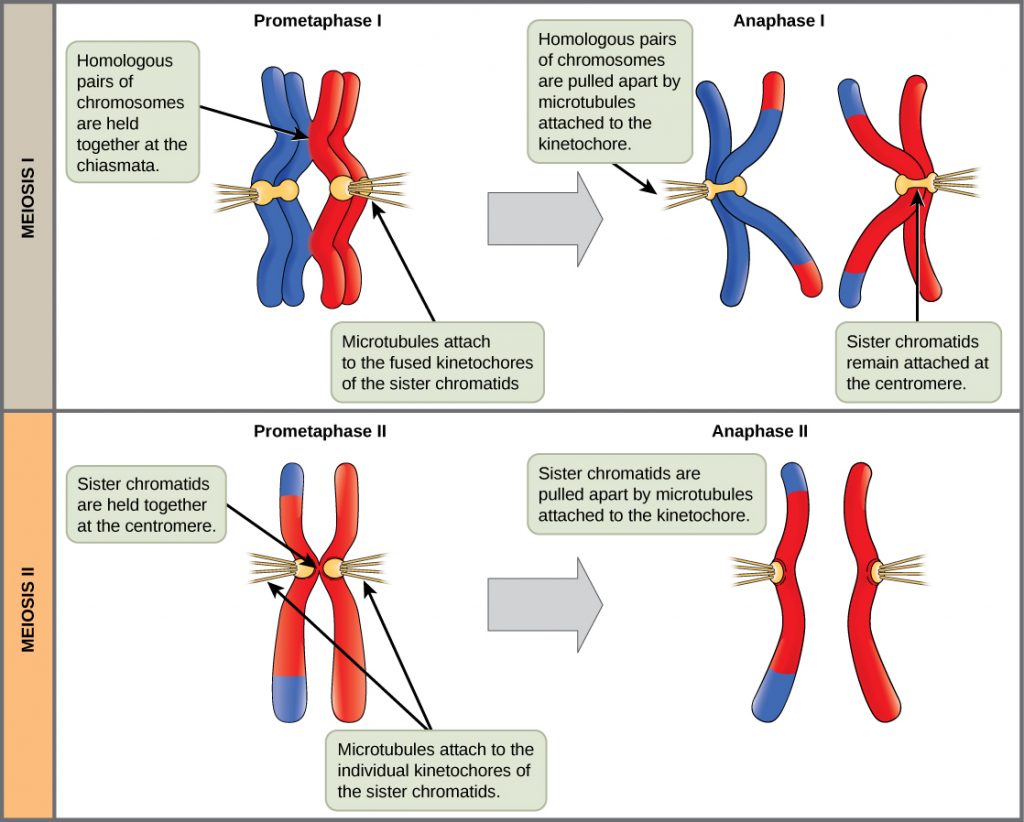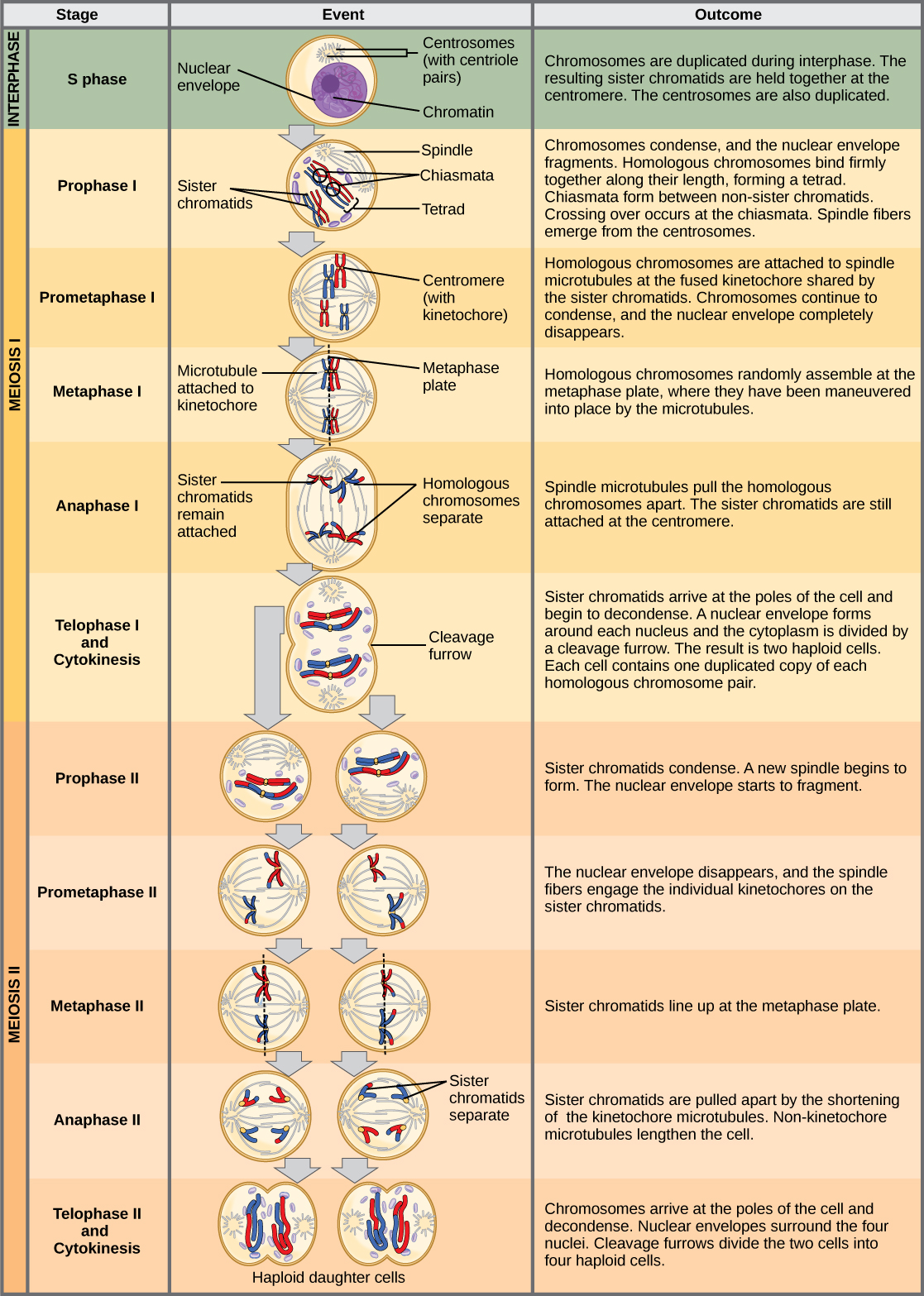82 Meiosis II
In some species, cells enter a brief interphase, or interkinesis, before entering meiosis II. Interkinesis lacks an S phase, so chromosomes are not duplicated. The two cells produced in meiosis I go through the events of meiosis II at the same time. During meiosis II, the sister chromatids within the two daughter cells separate, forming four new haploid gametes, each with one copy of each chromosome. The mechanics of meiosis II is similar to mitosis, except that each dividing cell has only one set of homologous chromosomes. Therefore, each cell has half the number of sister chromatids to separate out as a diploid cell undergoing mitosis.
During meiosis II, each sister chromatid is attached to spindle fiber microtubules from opposite poles. The sister chromatids are pulled apart by the spindle fiber microtubules and move toward opposite poles (Figure 1).

The chromosomes arrive at opposite ends of the cells and begin to decondense (unwind). Nuclear envelopes form around the chromosomes. Cytokinesis separates the two cells into four unique haploid cells. At this point, the newly formed nuclei are both haploid and have only one copy of the single set of chromosomes. The cells produced are genetically unique because of the random assortment of paternal and maternal homologs and because of the recombining of maternal and paternal segments of chromosomes (with their sets of genes) that occurs during crossover.
The entire process of meiosis is outlined in Figure 2 (you do not need to know the names of the phases or what happens during each phase, only what happens overall during meiosis I and II).

Summary of Meiosis II
Meiosis II begins with the 2 haploid cells where each chromosome is made up of two connected sister chromatids. DNA replication does NOT occur at the beginning of meiosis II. The sister chromatids are separated, producing 4 genetically different haploid cells.
References
Unless otherwise noted, images on this page are licensed under CC-BY 4.0 by OpenStax.
OpenStax, Biology. OpenStax CNX. May 27, 2016http://cnx.org/contents/s8Hh0oOc@9.10:1Q8z96mT@4/Meiosis

